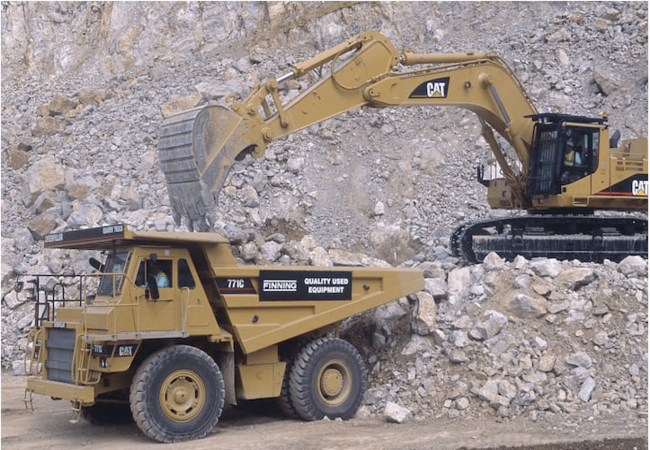Capital goods are a critical component of modern industrial production. These goods are designed to last for a long time and provide durable support to companies in their operations. They include machines; equipment; and buildings that are used to produce goods and services. In this article, we will explore the capital goods field, its significance in the economy, and how it affects businesses.
Understanding Capital Goods Field
Capital goods are different from consumer; goods in that they are not intended for final; consumption. Instead; they are used to produce other; goods and services. The capital goods field encompasses a broad range of industries, including manufacturing, construction, transportation, and energy. This field is a key contributor to economic growth and development because it enables businesses to produce more goods and services efficiently. The capital goods field; is composed; of various types of capital goods; such as machinery, tools, and vehicles. These goods can; be further divided; into two categories: fixed capital and circulating capital. Fixed capital refers to long-term investments, such as land, buildings, and equipment. Circulating capital, on the other hand, refers to short-term investments, such as raw materials and inventory.
Role of Capital Goods Field in Economic Growth

The capital goods field is a crucial component of economic growth and development. It plays a critical role in increasing productivity, creating jobs, and improving the overall standard of living. When companies invest in capital goods, they are able to produce more goods and services efficiently. This, in turn, leads to increased profits and job creation. As businesses grow and expand, they require more capital goods, which creates a positive feedback loop for the economy. In addition to boosting productivity and job creation, the capital goods field also supports technological advancements. New machinery and equipment are continuous; being developed to improve; production processes and increase efficiency. As a result, companies are able to produce more goods and services at a lower cost. This, in turn, leads to increased competitiveness and a stronger economy.
Impact on Businesses
The capital goods field has a significant impact on businesses of all sizes. Small businesses, in particular, benefit from the availability of affordable capital goods. They are able to invest in machinery and equipment that they otherwise would not be able to afford. This allows them to compete with larger businesses and expand their operations. Large businesses, on the other hand, rely heavily on capital goods to remain competitive in their respective industries. They invest heavily in fixed capital, such as buildings and equipment, to increase efficiency and reduce costs. By doing so; they are able to produce more goods and services at a lower cost; which gives them a competitive advantage.
Challenges in the Capital Goods Field
Despite its importance, the capital goods field faces several challenges. One of the biggest challenges; is the high; cost of investment. Capital goods are often expensive, which can make it difficult for businesses, especially small businesses, to invest in them. This can limit their ability to grow and compete with larger businesses. Another challenge is the rapid pace of technological change. As new technologies; are developed; companies must continually invest in new machinery and equipment to remain competitive. This can be a significant expense, particularly for small businesses with limited resources.
History of Capital Goods Field

The concept of capital goods dates back to the Industrial Revolution in the 18th century. During this time; factories were; being established; and machines were replacing human; labor in manufacturing. This led to an increase in productivity and the mass production of goods. The use of capital goods continued to grow over time; today they are used in almost; every industry.
Types of Capital Goods
Capital goods can be divided; into two main categories: durable and non-durable. Durable goods are long-lasting; are expected to provide value; for a significant period of time. Examples of durable capital goods include machinery, vehicles, and computers. Non-durable goods, on the other hand, have a shorter lifespan and are usually consumed quickly. Examples of non-durable capital goods include raw materials and supplies used in the production process. Another way to classify capital goods is by their level of sophistication. Basic capital goods include tools and equipment that are relatively simple and easy to operate. Advanced capital goods, on the other hand; are highly; specialized and require; advanced training and technical skills to operate. Examples of advanced capital goods include robotics and other high-tech equipment used in manufacturing.
Impact of Capital Goods on the Economy
The capital goods field plays a critical role in the economy, providing businesses with the tools and equipment they need to produce goods and services. When businesses invest in capital goods, they can become more productive and efficient, which can lead to increased profits and economic growth. Capital goods also create jobs in the economy, both directly and indirectly. When businesses invest in capital goods, they often need to hire additional workers to operate and maintain the equipment.
Additionally, the increased productivity and efficiency that come from using capital goods can lead to higher demand for goods and services, creating even more jobs throughout the economy. In addition to its direct impact on businesses and job creation, the capital goods field also has a ripple effect throughout the economy. When businesses invest in capital goods, they often purchase inputs from other businesses, such as raw materials and supplies. This creates additional demand throughout the economy, leading to even more economic growth and job creation.
Challenges in the Capital Goods Field

While the capital goods field has many benefits for the economy, it also faces several challenges. One major challenge is the high; cost of capital goods. Advanced capital goods, in particular, can be very expensive, making it difficult for smaller businesses to invest in them. This can create a barrier to entry for new businesses and limit competition in some industries. Another challenge is the rapid pace of technological change in the capital goods field. As new technologies emerge, older equipment can quickly become outdated, leading to the need for frequent upgrades and replacements. This can create a financial burden for businesses, particularly smaller ones that may not have the resources to keep up with the latest technology.
Finally, the capital goods field is also subject to fluctuations in the business cycle. During times of economic recession, businesses may cut back on investment in capital goods, leading to a slowdown in economic growth. This can create a vicious cycle, as slower economic growth can lead to even less investment in capital goods and further economic stagnation.
Capital Goods Industries
The capital goods field encompasses a wide range of industries, including construction, manufacturing, transportation, energy, and more. Within each industry; there are specific types of capital goods; that are utilized to produce goods and services.
For example, in the manufacturing industry, capital goods may include machinery and equipment used to produce goods such as automobiles, electronics, and consumer products. In the transportation industry, capital goods may include vehicles such as airplanes, trains, and ships. In the energy industry, capital goods may include infrastructure such as pipelines and power plants.
Key Trends in the Capital Goods Field

The capital goods field is constantly evolving, driven by changes in technology; globalization, and other factors. Here are some of the key trends that are currently shaping the capital goods industry:
Technological Advancements
Advancements in technology are transforming the capital goods field, enabling businesses to produce goods and services more efficiently and effectively. For example, new manufacturing technologies such as 3D printing and automation are allowing companies to produce goods with greater precision and at lower costs. Similarly, advances in transportation technology are making it easier and more cost-effective to transport goods around the world.
Globalization
Globalization is also having a significant impact on the capital goods field. With the rise of international trade and investment, businesses are increasingly looking to expand their operations overseas. This has led to increased demand for capital goods in emerging markets, as well as greater competition among businesses operating in the same industry.
Sustainability
Sustainability is becoming an increasingly important consideration in the capital goods field. With growing concerns about climate change and environmental degradation, businesses are looking for ways to reduce their carbon footprint and operate more sustainably. This has led to increased investment in renewable energy sources such as wind and solar power, as well as more efficient and eco-friendly manufacturing processes.
Conclusion
The capital goods field is a critical component of the global economy, encompassing a wide range of industries and technologies. By understanding the key concepts and trends in this field, businesses can better position themselves for success in the years to come. From technological advancements to globalization and sustainability, there are many factors that are shaping the future of the capital goods industry. By staying abreast of these trends and adapting to changing market conditions, businesses can ensure that they remain competitive and profitable over the long term.




